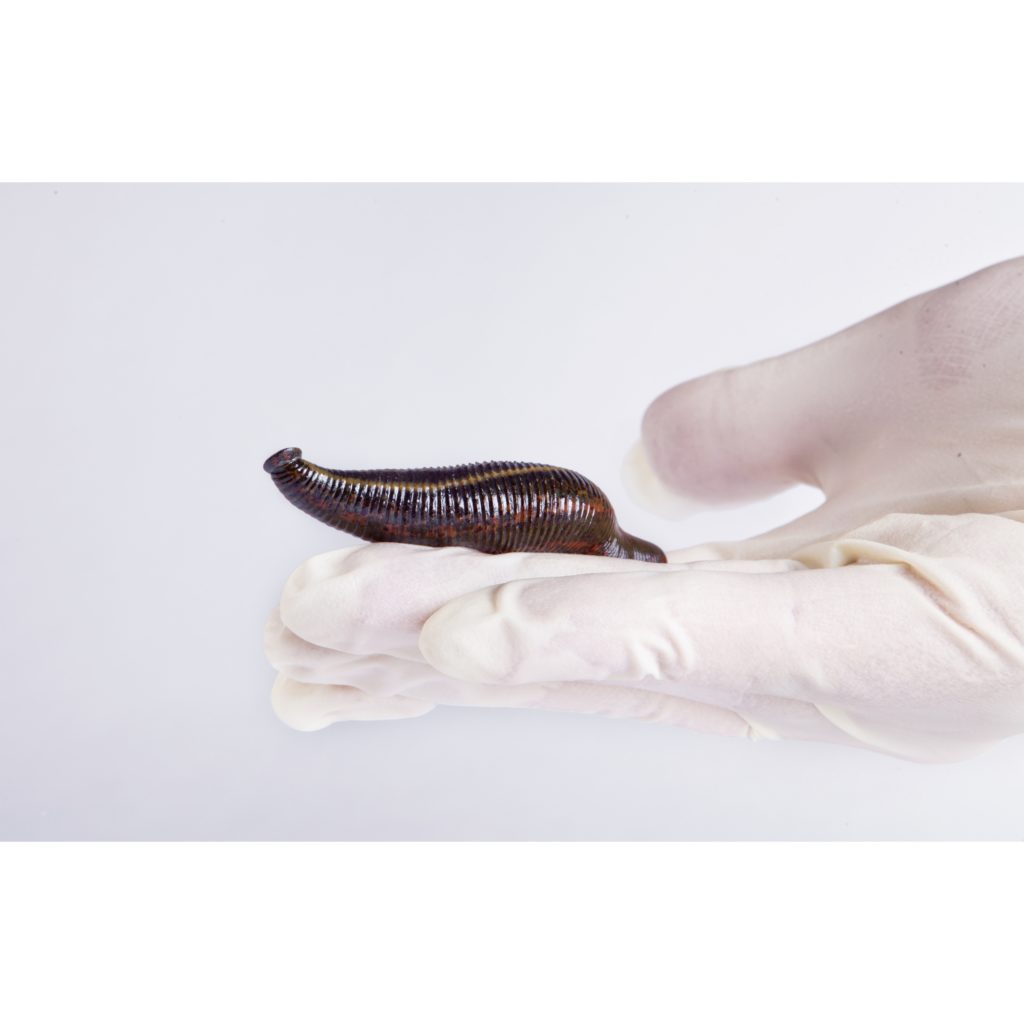Research
Do Leeches Hold the Key to Improving Organ Transplants?
21 November 2016
New research using experimental leech saliva-inspired ‘organ paint’ shows promising results in kidneys.
Historically leeches were thought to cure illness by consuming ‘impure’ blood, and have been used for medicinal purposes since the ancient Egyptians. However in the modern world of transplantation, leeches are still proving useful – albeit for very different reasons.Now an experimental drug, based on an anti-clotting protein molecule found in leech salivary glands, has allowed surgeons to ‘paint’ the blood vessels inside kidneys used in organ transplants as a way to reduce clotting and minimize bleeding risks to patients during surgery.
The leech-inspired drug is an engineered form of a naturally occurring protein molecule, Hirudin, found in the leech’s saliva that prevents clotting (so that they can feed). The drug, called Thrombalexin, is a shortened version of Hirudin that has been chemically modified with a ‘fatty tail’ that allows it to stick and coat the lining on the inside of blood vessels. In a similar process known to science as ‘immuno-camouflage’, Thrombalexin forms a barrier that prevents the tissue surface from being recognized by different kinds of blood cells – in this case platelets. The end result is that the organ-paint acts in the same way as a lubricant, maintaining blood flow to the organ whilst reducing blockages. The technology is being used to prevent damaging clots forming inside the kidney in a very targeted way and by doing so removes the need for the patient to be injected with anti-coagulants (heparin) before or after transplantation. This should reduce the overall risk of bleeding and improve kidney function after transplant.
The proof-of-concept research, part funded by Live Life Give Life and led by PhD student Karim Hamaoui and surgeon Mr. Vassilios Papalois at Imperial College London, used Thrombalexin on pig kidneys and human kidneys not deemed not fit for transplantation. In the study, which is published in August’s edition of the journal Transplantation1, the kidney ‘paint’ is administered whilst the organ is attached to a machine that circulates it with a cold oxygen-rich solution – a process known as hypothermic machine organ perfusion. Promisingly, when the kidneys were then circulated with blood (re-perfusion) to mimic being in a patient, those that were treated with Thrombalexin showed less damage, better blood flow and a reduction in clotting in the microvasculature (very tiny blood vessels), than those which had not.
“Blood clots developing in an organ after it is transplanted is a serious and possibly devastating complication for patients. Our work at Imperial College London has been on researching ways to prevent this from happening with a new generation of anti-clotting agents.” Said Dr. Karim Hamoui, the primary author.
This technology needs further testing but this new study using machine organ perfusion is the “foundation for the development of a strategy to pre-treat organs by ‘painting’ them from the inside before they are transplanted.”
“We hope that we will be able to use organs currently not suitable for transplantation, and increase the chances of post-transplant survival and long term function of these organs, and this extends to not only the kidney but also the pancreas and the liver. There is immense potential benefit for our patients”
__
This blog is part of series looking at the future of transplantation medicine and written by Trustee Dr. Luke Yates. To help us fund more research like this, please go to our donate page.
Reference
1. Hamaoui K, Gowers S, Boutelle M, et al. Organ Pretreatment with Cytotopic Endothelial Localising Peptides To Ameliorate Microvascular Thrombosis & Perfusion Deficits In Ex-vivo Renal Haemo-reperfusion Models. Transplantation. 2016;

